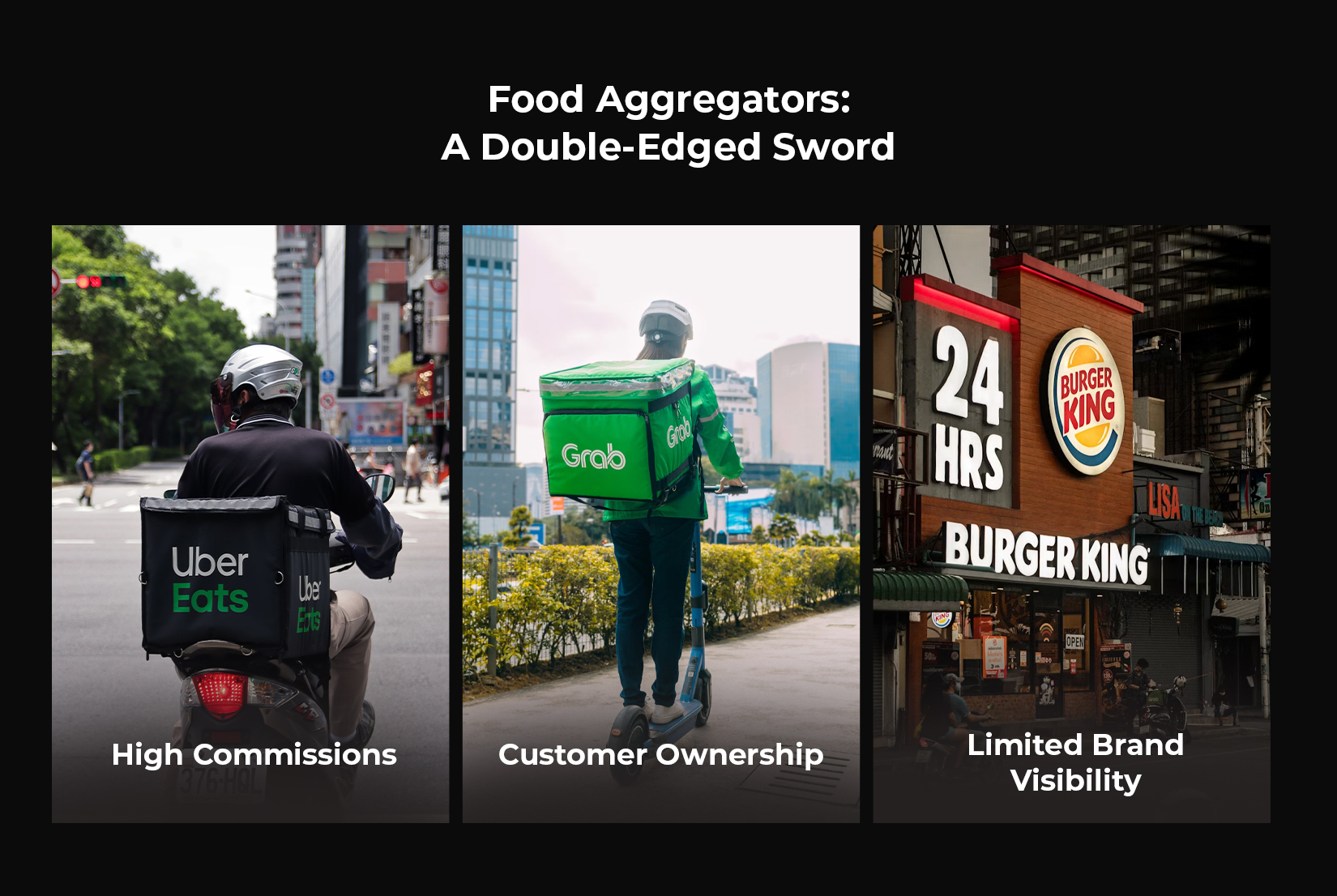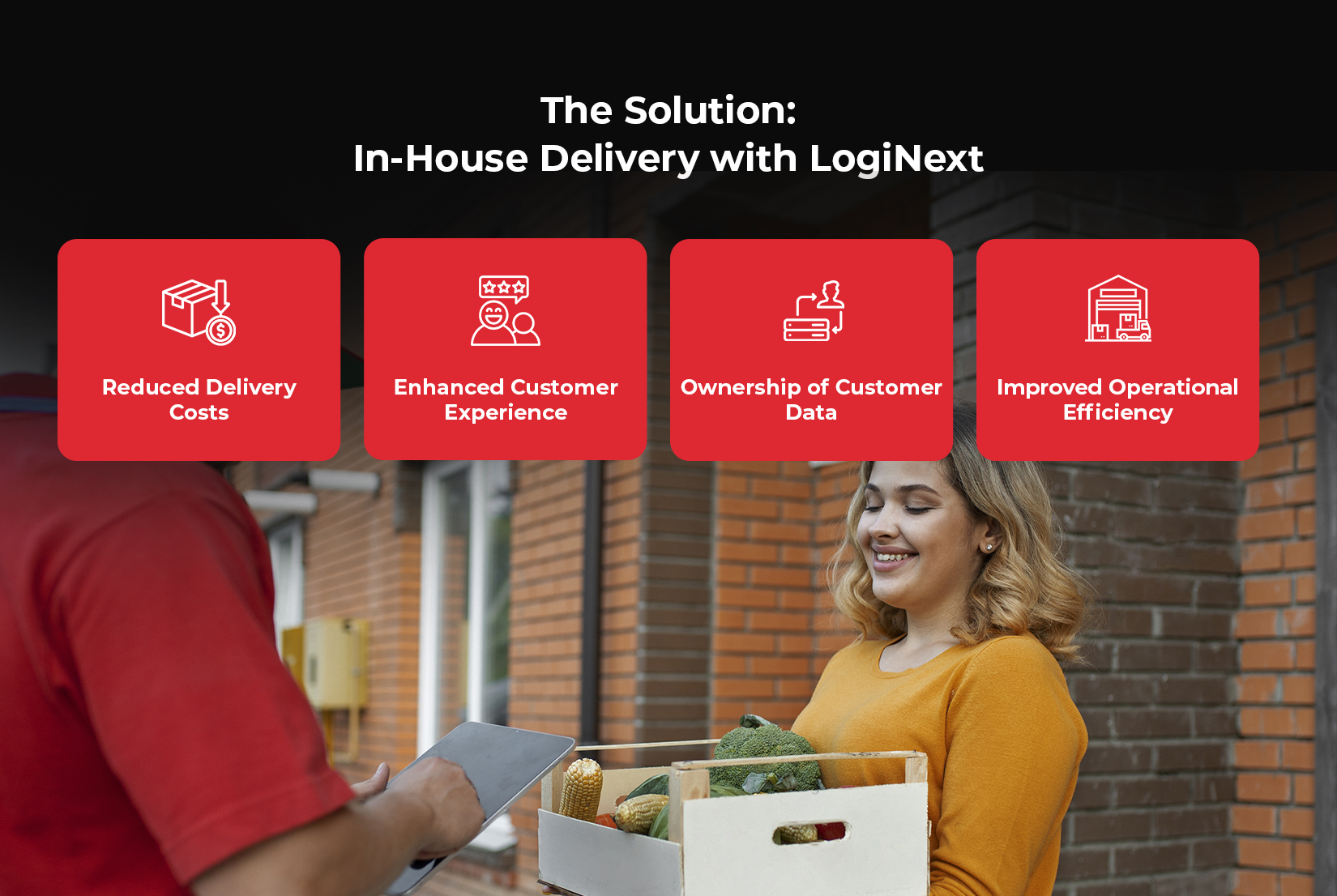
Food Aggregator Platforms Hurting Your Profit Margins? Discover How LogiNext Can Help
The food delivery industry is booming, with revenue expected to hit $223.7 billion globally by 2027, according to Statista. While this growth offers exciting opportunities, it also comes with significant challenges for restaurants and food businesses. Chief among them is the reliance on food aggregator platforms, which promise greater reach but often cut deeply into profit margins through hefty commissions and hidden costs. If you’re a food business struggling with thinning margins, LogiNext’s delivery management software could be the game-changer you need. By adopting an efficient delivery management software, you can minimize dependency on aggregators, optimize operations, and take control of your profit margins.
Food Aggregators: A Double-Edged Sword

Food aggregator platforms like Uber Eats, DoorDash, and Zomato are essential tools for reaching customers, especially in a highly competitive market. However, the cost of partnering with these platforms can be prohibitive:
1. High Commissions:
Most platforms charge between 15% and 30% per order, according to the National Restaurant Association. For restaurants with profit margins as low as 5% to 10%, this can turn fulfilling orders into a losing proposition.
2. Customer Ownership:
Aggregators typically control customer data, preventing businesses from engaging directly with their patrons. This limits opportunities for personalized marketing and customer loyalty programs.
3. Limited Brand Visibility:
On aggregator apps, your restaurant is just one of hundreds. Branding takes a backseat, making it harder to stand out in the crowded marketplace.
In short, while aggregators provide convenience, their long-term impact on profitability and brand control is a significant concern.
The Solution: In-House Delivery with LogiNext

LogiNext offers an industry-leading delivery management platform designed to help businesses streamline delivery operations, reduce costs, and regain control over their logistics. Here’s how LogiNext stands out:
1. Reduced Delivery Costs:
LogiNext’s automated route optimization reduces fuel consumption and travel time, cutting delivery costs by up to 30%. For example, a cloud kitchen using LogiNext saw their per-delivery cost drop from $6 to $4.20—a savings of nearly 30% per order.
2. Enhanced Customer Experience:
Real-time order tracking and automated notifications improve transparency and keep customers informed. According to McKinsey, customers are 50% more likely to reorder when they can track their deliveries.
3. Ownership of Customer Data:
LogiNext enables businesses to capture and analyze customer data, providing insights for targeted campaigns and loyalty programs. A restaurant chain using LogiNext reported a 20% increase in repeat customers after implementing a data-driven engagement strategy.
4. Improved Operational Efficiency:
By automating tasks like order allocation, driver dispatch, and delivery scheduling, LogiNext reduces human error and accelerates processes. This frees up valuable time for your team to focus on core operations.
Why Invest in Delivery Management Software?
The global food delivery market is projected to grow by 10.3% annually, as per Grand View Research. Yet, this growth doesn’t guarantee profitability for restaurants, especially those relying heavily on aggregator platforms. That’s where a delivery management system like LogiNext can make a difference.
Market Trends Driving Demand for Delivery Management Solutions
In today’s fast-paced world, the demand for efficient and reliable delivery systems has become more critical than ever. Several market trends are driving the need for advanced delivery management solutions.
1. Increased Delivery Expectations:
Consumers are no longer satisfied with standard delivery timelines. With the rise of e-commerce and on-demand services, there is an overwhelming demand for faster, more precise deliveries. According to a PwC survey, 88% of consumers are willing to pay a premium for same-day or faster delivery. This shift in consumer behavior has pushed businesses to invest in solutions that ensure quicker turnaround times without compromising on accuracy.
2. Rising Delivery Costs:
The logistics industry is facing significant challenges, such as rising fuel prices and a shortage of drivers. These issues contribute to increased delivery costs, making it essential for businesses to adopt technology that streamlines operations, optimizes routes, and reduces expenses. Efficient delivery management solutions can help businesses control costs while maintaining a high level of service.
3. Growing Competition:
The delivery landscape is more competitive than ever. Standalone restaurants, for example, are not just competing with other restaurants but also with aggregator-owned virtual brands and dark kitchens. To remain competitive, businesses need to deliver exceptional service, often in a highly congested market.
Benefits of a Robust Delivery Management Platform
1. Faster Delivery Times:
LogiNext’s AI-powered optimization algorithms play a pivotal role in reducing delivery delays. With advanced route planning and real-time traffic data, businesses can reduce delivery times by up to 25%, ensuring customers receive their orders on time, every time.
2. Scalability:
As businesses grow, their delivery requirements become more complex. Whether you’re handling 50 or 5,000 orders daily, a robust delivery management platform like LogiNext scales with your operations. It provides the flexibility to handle fluctuating order volumes without compromising efficiency.
3. Sustainability:
In addition to operational efficiency, sustainability has become a key concern for businesses. Efficient routing minimizes fuel consumption and reduces carbon emissions, helping businesses meet environmental goals while also cutting costs. This focus on sustainability appeals to environmentally conscious consumers and can enhance a brand’s reputation.
Take Charge of Your Deliveries
The days of being at the mercy of food aggregator platforms are over. With LogiNext’s delivery management platform, you can:
– Save thousands of dollars in commission fees
– Enhance operational efficiency and customer satisfaction.
– Build a sustainable and scalable delivery model that drives profitability.
The food delivery industry’s future belongs to businesses that can adapt and take control of their logistics. By investing in the best delivery management software, you’re not just cutting costs—you’re creating a foundation for growth and success.
Also Read: LogiNext’s Automated Order Allocation streamlines QSR operations.
Conclusion
Food aggregator platforms may offer short-term solutions, but their impact on profit margins is hard to ignore. LogiNext’s delivery management platform provides the tools you need to transition to a more sustainable, cost-effective delivery model.
Don’t let aggregators dictate your margins. Empower your business with LogiNext’s delivery management system and see the difference for yourself. Book a demo with LogiNext today and take the first step toward greater control, profitability, and success in the food delivery space.
83







@LogiNext